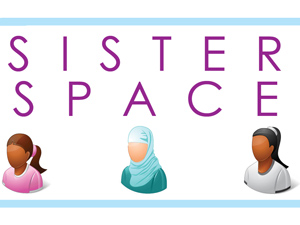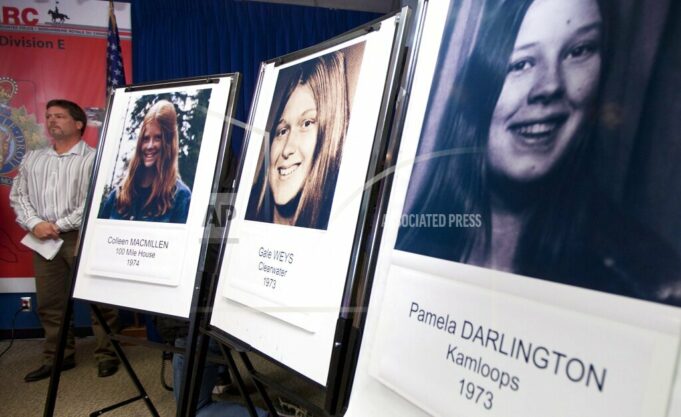Indigenous people also known as Native Americans and Aboriginal people have suffered great loss of life, land, and culture throughout time, and still are today from the hands of the American and Canadian governments through unjust policies and treaties.
In 1534, the French and English arrived on what is now Canada, only to find Indigenous people of the First Nations, Métis, and Inuit tribes were already populated in that region.
Once European settlers began arriving in the 16th century, Indigenous people were systematically uprooted from their traditional homes and villages, either through war, forced relocation, or threats of violence, and pushed into remote areas where they wouldn’t get in the way of European colonization.

Uniquely susceptible to European disease, the vast majority of Canada’s Indigenous population quickly declined to a small minority as their death rates skyrocketed and European immigration increased.
In “Message to the Black Man in America,” the Most Honorable Elijah Muhammad wrote, “The White man came out of Europe in desperation seeking a place to expand and began to kill the aboriginals of this continent (the Red Indian) and take their homes. This was one of her great sins. The White man has left a remnant of that people for the sake of mockery and for his children to see the people their fathers conquered in taking this land of the Indians for their own land (as they call it today).”
Today, Canada’s Indigenous population is 1,673,785 or 4.9 percent, while accounting for 25 percent of the country’s federal prison population, which has a total of 15,000 prisoners, according to the Women’s Prison Network.
Indigenous women in Canada are imprisoned at rates that have surpassed Indigenous men, and these numbers continue to grow. Due to their central roles in communities, Indigenous women have been a target of the colonial agenda to eliminate Indigenous presence.
The criminal justice system in Canada has become one of the major components set up to assimilate and control Indigenous people.
“By removing the woman through incarceration, it’s blatant genocide. The woman carries the children, births the children, and teaches the culture. The crisis with missing and murdered Indigenous women specifically in Canada have been going on for over 50 years. Along Highway 16 that runs through northern British Columbia, now known as the Highway of Tears.
The highway’s construction was completed in 1969, and in 1971 the Indigenous people started putting pressure on the Canadian government and that’s when an 18-year-old Indigenous woman went missing on that highway,” said Amatullah Muhammad, Chicago youth artist and activist.
She continued, “Doing further research, Indigenous women have been facing danger in that region, all the way back to the 1800s. When mining was going on, miners would go onto reservations and steal Indigenous women, assault them and murder them sometimes. Laws were put into place, but those laws protected the White man. In recent history, a correlation was found with the pipeline construction along that highway, and the construction workers were going onto the reservations and sexual assault cases rose. Once construction stopped, sexual assault cases dropped.”
To learn more about the Highway of Tears, go to highwayoftears.org/about-us/highway-of-tears.
The war on Indigenous peoples also includes the systematic and abusive treatment of children. And while the Canadian government recently announced, according to the New York Times, “it reached what it called the largest settlement in Canada’s history, paying $31.5 billion to fix the nation’s discriminatory child welfare system and compensate the Indigenous people harmed by it,” is it enough to atone for the historic wrongs inflicted on the Aboriginal people?
“The agreement in principle forms the basis for a final settlement of several lawsuits brought by First Nations groups against the Canadian government. Of the overall settlement, $40 billion in Canadian dollars, half will go toward compensating both children who were unnecessarily removed, and their families and caregivers, over the past three decades,” the newspaper reported.
“The rest of the money will go toward repairing the child welfare system for First Nations children—who are statistically far more likely to be removed from their families—over the next five years to ensure families are able to stay together,” continued the New York Times.
Of those eligible for compensation, experts hired during the litigation have estimated that 115,000 children were separated from their families since 1991, said Robert Kugler, a lawyer who represented First Nations complainants on two different lawsuits, the article stated.
While less than eight percent of children under 14 in Canada are Indigenous, they make up more than 52 percent of those in foster care, according to 2016 census data.
Student Minister Abel Muhammad, stated, “The Honorable Minister Louis Farrakhan in 2015 brought to light the disparities, the conditions that exist on reservations that people aren’t aware of because it’s not on the local news. I think that it was really significant that Minister Farrakhan highlighted the plight of our Native brothers and sisters. There’s been a history, all the way to this day, of deliberate annihilation of Indigenous women through surgically removing the reproductive organs, out of fear of reproduction of our numbers rising.
“Also, the alcoholism and drug abuse takes place where there’s a concentration of Indigenous people, in particular Indigenous women. There is a focus, an attack on the woman. In Indigenous culture, the woman has always played a central figure in society and she has been given equal rights, and a strong voice in leadership. Some tribes have women chiefs and council leaders. There is absolutely a connection between commercialization and capitalist endeavors, these things, money hungry people and people who don’t value the woman.”
According to PrisonPolicy.org, “Native people made up 2.1 percent of all federally incarcerated people in 2019, larger than their share of the total United States population, which was less than one percent.”
Native women are particularly overrepresented in the incarcerated population. They made up 2.5 percent of women in prisons and jails, while representing 0.7 percent of the United States population.
Sister Space is devoted to amplifying the voices of women as well as telling their stories and highlighting their accomplishments. We welcome your ideas and submissions. Please send any material to [email protected].
Contributing Writer Shawntell Muhammad can be contacted at [email protected].













